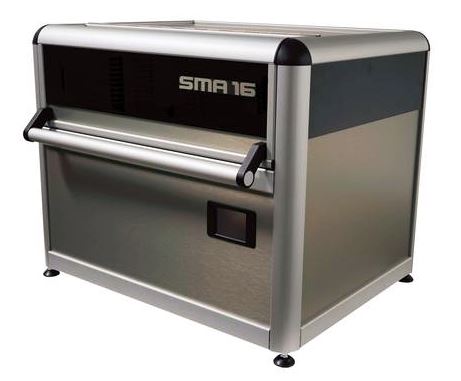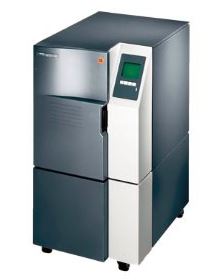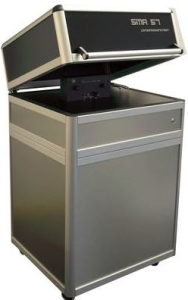What is computer output microfilm or microfiche? And what does an archive writer have to do with it? If you have heard about them before, we are sure this article will be of interest. If you are working in this industry, even better.
What should you know?
Computer output microfilm or microfiche, as it is called, is a method of creating microfilm using data from a computer. The machine that does this is an archive writer. The name was first used by Kodak when selling the first machine which created microfilm from computer files.
What else is important?
The Microfilm Archive writer was developed by Kodak in the late 1980’s. The machine featured a high intensity led bar and a special microfilm cartridge. The way in which the led bar light up was the way in which the microfilm was written. There are also archive writers that write other types of microform, such as microfiche writers.
This is how the major microfilm and microfiche archives were created. And they are still written in the same way today. With the evolution of technology, we now have different manufacturers that build such microfilm writers. It is what we call today COM machines, more exactly computer output on microfilm or microfiche.
Types of Digital Archive writers
As we mention above, there are different types of archive writing machines. They can be run at different speeds, can write 16mm or 35mm microfilm, or can write the microfilm and microfiche in bitonal and grayscale.
It didn’t take manufacturers long to understand that microfilm created from computer files is actually the future.
Archive Writers for 16mm microfilm
Computer to output microfilm machines usually ran on 35mm microfilm. With the evolution of microfilm technology, we have to to the point in which manufacturers understood that most documents are A3 and A4. Such is this, that the market almost totally shifted to archive writers for 16mm microfilm.
Kodak was the first to launch an archive writer. The model in question was the Kodak Document Archive Writer 4800, which was a double roll 16mm microfilm writer. Fuji later launched their own machine, the ar1000, but the machine was crippled with issues. It wasn’t the success everyone expects from a company such as FUJI. The Kodak system was much more reliable. It also used the 334NXDM reference archive media.
By the time FUJI launched the AR1000 archive writer, Kodak was already launching the 4 evolution of the 4800, with the Kodak Archive Writer i9600 updated series. These feature a dual roll writing capability with high writing speed. They still remain in use, and some customers that updated to the Fuji model, are returning to their old Kodaks.
Digital Archive Writer for 35mm microfilm
For 35mm microfilm, the only two manufacturers that are worth talking about are SMA and Zeutschel. They use pretty much similar technology, only for the Zeutschel product to cost 3 times more and be twice as big. Therefore, if you do want ultra high-quality archive writing, SMA is the only way to go.
SMA manufactures the entire range to write microfilm and microfiche. Their archive writers range from a 16mm model to a 35mm model, and an equipment that can write both 16mm and 35mm microfilm. To make it complete, they also sell the SMA 57 Dreamwriter, which is the only machine capable of writing 16mm and 35 mm microfilm, and also write microfiche.
It’s an all in one microfilm archive writer solution. The only one on the market and probably the only manufacturer to still employ the original designers of the machines. This is a major advantage to make sure your machines will also be running smoothly in the future.
They both create microfilm from computer output, but they are different compared to the Kodak machines. They capture a single frame, while the Kodak captures each line independently.
The SMA technology is theoretically more reliable but will lead to slower writing speeds of the computer files. At the same time, they will work with grayscale computer output, which the Kodak won’t. So the products are not in a direct competition, they serve different needs.
Microfiche Archive writer
Microfiche is the other type of microform besides the roll based microfilm. As you know, microfiche comes in sheets. So, to write microfiche a different type of archive writer is needed. As we mentioned in the other paragraph, SMA sells the SMA 57 Dreamwriter which is a combo of a microfilm and microfiche writer.
At the same time, SMA also offers a separate microfiche writer which only writes sheets of microfiche. Such an archive writer is limited to writing microfiche but costs a bit less than the SMA 57. So depending on other factors, it all depends on what you are using it for. If you think you only need to write microfiche, such a machine is the way to go.
Bitonal or Grayscale Archive Writers
Writing film in bitonal or grayscale makes a huge difference. To be more precise, computer output microfilm depends on computer input. If you write text, a bitonal archive writer is enough. If you also need to write pictures, then you need a grayscale microfilm writer.
The archive writers from Kodak and Fuji, only write in bitonal. They might accept inputs that are also color or grayscale, but in the end, the output will still be bitonal. So while these are excellent for writing text, they are not that good to write images. At the same time, the technology helps the machines to be really fast. At such speeds, writing a grayscale film is impossible.
The archive writers from SMA are the ones that can write in grayscale. Give the technology they are using, speed can be limited and therefore the archive writer can expose grayscale images on film. It is a huge advantage over the other vendors.
What computer output can I use to create microfilm
- The first thing you can use is digital scans of paper documents. This means just about any file type such as PDF, Jpeg, or TIFF.
- You can use files such as digital forms, word files and even other types of documents that were created on a computer. As long as they use the correct file format they can be written to microfilm.
- Special types of documents that are generated by third-party software or your own proprietary software. This usually means reports, analysis, medical bulletins or just about anything that is text or image based.
- Last but not least, most images on a computer can be converted to microfilm, as long as it respects the general guidelines to write microfilm media.
Advantages of COM archive writers
- It lets you archive documents on microfilm and microfiche for large periods of time. The LE500 rated films can last as long as 500 years.
- A microfilm writer is good for writing large batches of documents. For example, we can process around 200.000 A4 documents per day in an extended shift.
- Because the writer is connected to the computer, you don’t have to microfilm directly. You can actually use any scanner to scan and the transfer the digital file onto a microfilm roll.
- With the evolution of technology, such machines don’t change too much. Therefore your investment is pretty much safe from quick obsoletion.
- There aren’t that many things inside writers. They also do not fail very often. So maintaining and running costs are extremely low.
Disadvantages of computer output microfilming machines
- The major disadvantage is the cost of the initial investment. An archive writer will set you back tenths of thousands of dollars.
- While some are very quick others are not. Grayscale writers are in general slower. The film needs more time for exposure.
- Fewer and fewer experts in the field. As we mention, only SMA still employs the original designers of its machines.
- Servicing can be a bit of a handful. Experts have to travel from another country to help you ( if you are not in the US, UK or Germany).
What archive writer you should buy
- If you need to write 16mm microfilm, your range of choice is between Kodak and SMA. Mind you the SMA writes grayscale microfilm.
- For 35mm microfilm your choice should be between Zeutschel and SMA. The SMA model costs about 3 times less though, so it might be easy to choose.
- The grayscale film works on archive writers made by SMA and Zeutschel. Again, the price difference is quite big.
- For microfiche archive writers, there is only one place to go, and that is SMA. They still employ the original designers of such products.
If you are interested in receiving a quote for microfilming services, please go to our contact page and send us a note.
For more information on how microfilming is done, head to our microfilming process explained page.
You can also head to the SRLF UCLA’s page for a short history of microfilm.








